The aviation year has started with a bang — literally. We saw the first Airbus 350 destroyed in a ball of fire. The pictures of the burnt-out shell are chilling. Then the USA grounded all Boeing 737 Max 9s after a brand-new Alaska airlines plane had part of its fuselage ripped out violently. Tragically, Japan saw five lives lost in the smaller plane on the runway that was hit by the JAL A350. People going to start others impacted by the recent Japanese quake.

After 1580 flights with just one scary landing (plus three memorably nerve-wracking flights, and three missed approaches), my experiences mirror what is a very safe industry with a fatal accident rate of under 0.2 for every million flights. I want, however, to make sure I am as prepared as possible.
Here are nine tips for maximising survival in the unlikely event of an airliner emergency. Please share them with others…
1. Briefings- Listen Up
Sure many of us are familiar with many different types of planes now (especially 737s for me) but listening to that reminder of how things work, could save a life.
Studies have shown that people who listen to the briefing have a higher chance of survival in a life-threatening situation. More concern is that passengers who do not listen, “might hinder aircraft evacuation in an emergency as a result of their unconscienced decisions from ignorance and stubbornness“.
During the evacuation from US Air Flight 1549 which ditched into the Hudson, one passenger attempted to pull the emergency door into the plane. Another intervened saying ‘No, you’ve got to throw it out.” This was because they had paid attention during the briefing.


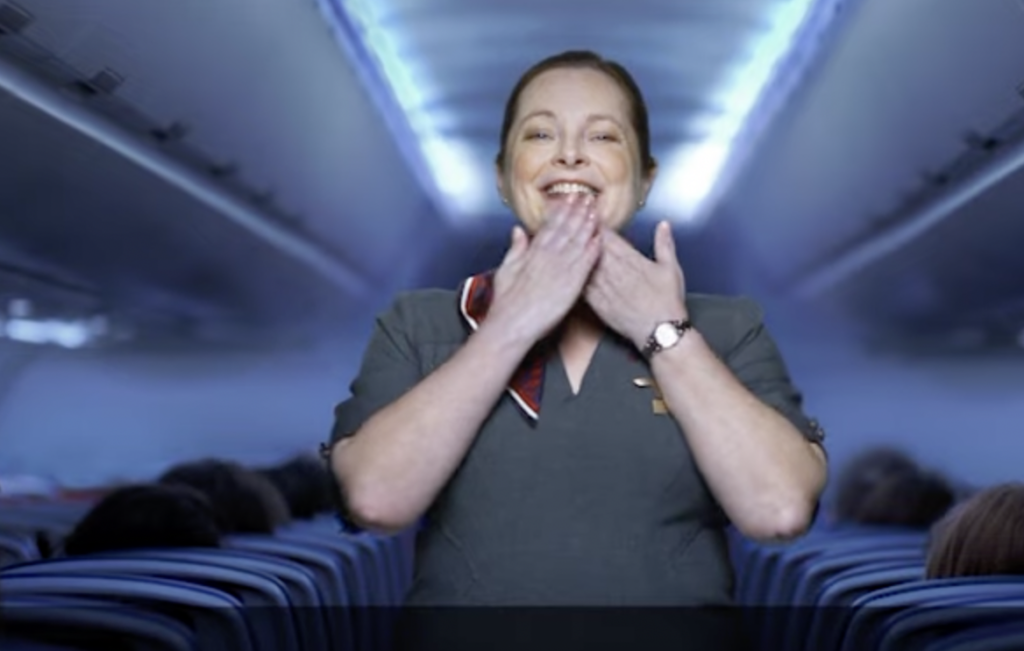
Action: When briefing starts, can we stop talking, switch off our movies, TikToks, music or surreptitious phone calls and encourage each other to focus on cabin crew or video screens? Just as the pilots rehearse their safety checks before take off, this is our time to do the same. Even after 1580 flights, I engage with the safety briefings—every time.
2. Seatbelt-Prepare for Panic

“When the seat belt sign illuminates, you must fasten your seat belt. Insert te metal fittings one into the other, and tighten by pulling on the loose end of the strap. To release your seat belt, lift the upper portion of the buckle.”
I was once contemptuous of this part of the safety briefing, believing: “everyone knows how to use seatbelt” Guess what? In an emergency, they don’t. People panic. What is surprising is that many passengers as a result of that panic, forget how to release their seat belt.The U.S. National Transportation Safety Board noted, with US1549: “Some passengers tried to move from their seats while their seatbelts were still buckled, and other passengers had difficulty locating and releasing their seatbelt buckles because of disorientation.”
Action: Buckle and unbuckle the seatbelt three times during the safety drill to remind yourself of where it is and how it works. Then tighten the belt, ready for takeoff. Oh, and keep it loosely fastened so if the plane drops suddenly you don’t hit the ceiling. That especially applies to kids. And please don’t unbuckle the second the plane hits the runway. You are still travelling at huge speed and sudden stops can cause injury.
3. Crew Instructions
On a recent flight, I sat across the aisle from a passenger using a laptop. Multiple cabin attendants asked the woman to shut the computer and stow the tray table. She nodded but didn’t comply. As we almost reached the runway, a flight attendant, stood over her to ensure she complied. However, the second, the crew were all strapped in, she whipped it out again, pulled the tray table down, and typed all through the takeoff. She was in mid-literary flow. This is not the first time, I have seen someone defy crew over tray tables and laptops but here are three reasons why it’s dangerous. Firstly, that laptop could go flying in a sudden stop. Secondly, the tray table makes it hard to move into a brace position and thirdly, she was obstructing the emergency exit.
Action: Follow crew requests and don’t argue with them over luggage, window shades, and tray tables. It is not hard to be respectful and safe.
4. Exits- Be ready to go, go, go
In a well-lit cabin, with no bags in the aisles and people all seated, the exits seem comfortably real, large, and present. As the Japan Airlines passengers can testify, in the dark with a fire outside, the exits were almost invisible. And that was without smoke in the cabin at the start of the evacuation.
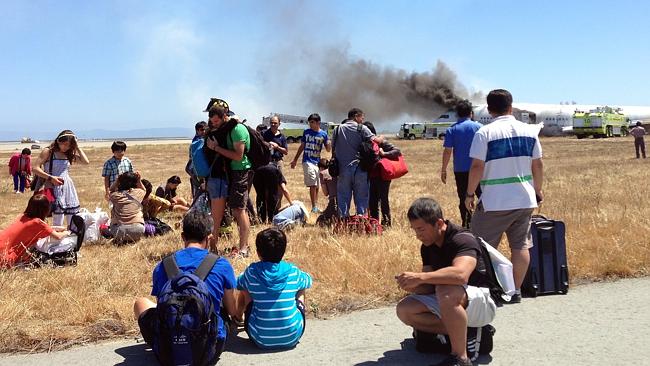
On the clear San Francisco morning of 6th July 2013, there was no sign that Asiana’s Boeing 777 aircraft would be lying in pieces with smoke pouring out of it seconds after it was cleared to land. We now know that, many passengers at the back of the plane were not aware of what to do in an evacuation.
Action: When they tell you to count the seats between you and the exit, do it. For the exit in front of you and the one behind you. If you are sitting in the emergency exit, take the crew’s instructions seriously, You may be opening that door.
5. Luggage- Prepare to Take Nothing
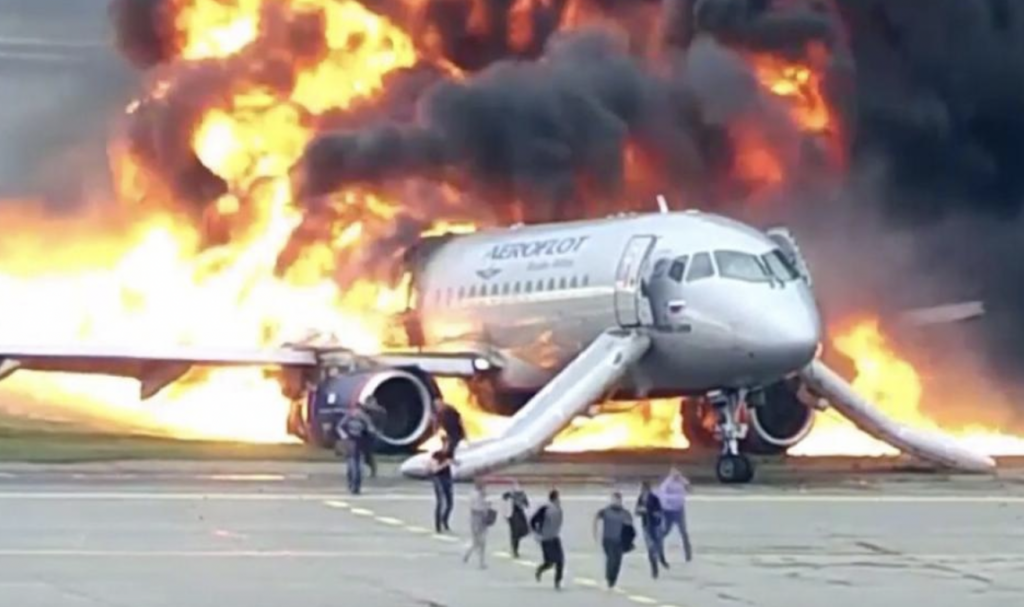

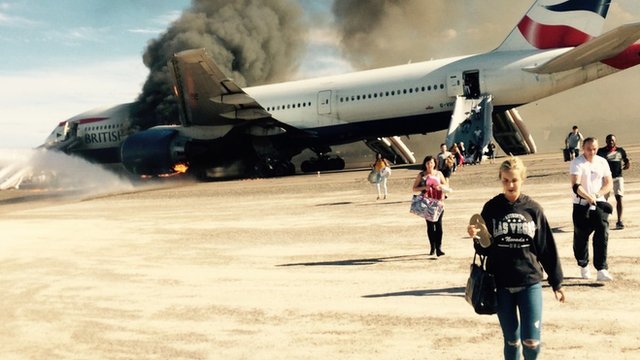
Contrast the crashes of British Airways 2276 in 2015, Emirates 521 in 2016, and Aeroflot 1492 in 2019 with the recent Japan Airlines crash. In all of the other disasters, I have mentioned, passengers grabbed their bags. In the Japan Airlines fire, all of the passengers left their luggage. This has been credited with the fact that everyone’s life was saved. In the case of the Russian plane, more lives might have been saved if people had obeyed flight crew instructions and left their possessions on board.
Action: Place your passport, wallet, and mobile phone inside your clothing for takeoff and landing You do not want to search for them or reach for them during an emergency. Note they must not impede your movement in any way. Do not add sharp or bulky objects. Accept that you could lose everything in your luggage. None of it is as important as your life or another’s life.
6. Clothing-Yes it Matters
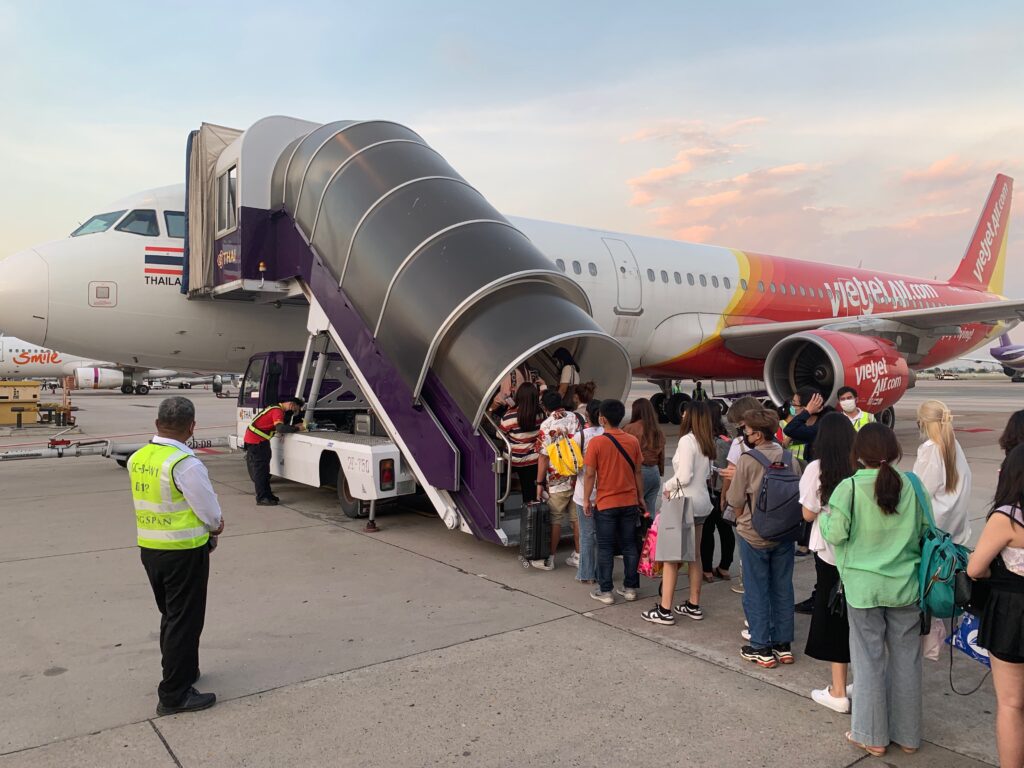
An off-duty pilot, a friend of mine, with whom I was flying, glanced disapprovingly at a group of passengers boarding with bare feet. He muttered quietly to me, “I’d hate to be those feet in a fire situation.”
If you have to slide down an emergency exit and run through grass or tarmac, shorts and flip-flops won’t protect you from cuts, bruises, and burns.
Action: For take-off and landing at least, wear as much as you can to cover to protect your body. For more protection, have a spare piece of clothing to cover your nose and mouth in case of smoke.
7. Oxygen Mask- Seconds Count
have only seen the oxygen masks deployed once. This was on the ground as we were deplaning. Suddenly, the masks dropped, and urgent automated announcements urged us to sit and place the masks on. Many people froze, and the cabin crew announced it was a technical failure!
In the air, mask deployment will be accompanied by a sudden and severe vibration, that automated announcement telling you to put your mask on, and (usually) a very steep descent by the plane, which can terrify people more than the masks.
It is important, without the descent, the oxygen in the plane could drop in 15 or 20 seconds, and in 30 to 45 seconds, you can pass out. Time is crucial.
Action: Listen to how to use the mask. Every second may count.
8. Brace for Impact
In the movie version of US Airways 1549, one of the most powerful clips is when Tm Hanks calmly says “This is the Captain. Brace for impact”. Words, I hope never to hear…
The main point of the Brace position is to help protect your body from impact and minimise possible injuries. There are some myths surrounding brace positions but in a report on British Midlands 1989 Boeing 737 crash: “Passengers who adopted the fully flexed “brace” position for crash-landing achieved significant protection against head injury, concussion, and injuries…”
Action: CASA notes that “Hands placed one on top of the other and on top of the head.” Place your dominant hand (the one you write with on top of your head). Put your non-dominant hand on top of that one. CASA again: “Fingers should not be interlocked.” Should something fall on you during a crash landing, you want to protect that dominant hand because you’ll need it to unbuckle your seat belt. Your other hand provides some protection to your “strong” hand from flying debris.
9. Life Jacket- Check it
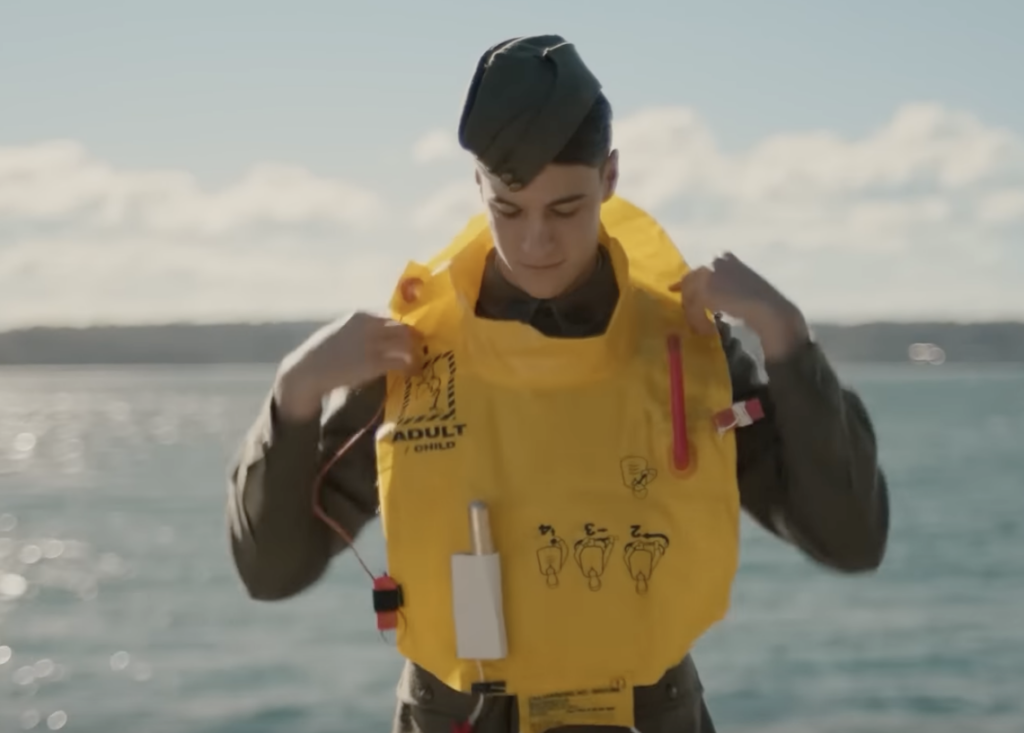
The most spectacular documented water landing by a regular aircraft was, of course, the US air flight I have mentioned above. Extraordinarily, in a water landing situation, 140 of those 150 passengers failed to grab their life jackets: they forgot about or were unaware that a life vest was under their seat. Other passengers stated that they wanted to retrieve their life vest but could not remember where it was stowed. This is a reminder that panic in a crash will lead to mistakes. Two passengers inflated the life jacket inside the cabin, impeding their egress despite being told in the briefing not to. Good reasons to focus during the briefing?
An obnoxious ex-coworker of mine told me that he had a friend who used to “collect” the life jackets off planes he flew on. It’s shocking to know that in 2023, life jackets are the most stolen items off airplanes (followed by the safety card, blankets, pillows, and business-class champagne flutes). One motivation is that life jackets fetch up to $US200 on eBay.
Action: Check to see if the jacket is there during the safety briefing, put your hand on it and imagine using it as the crew describes how to put it on. And if it is not already obvious, do not steal the life jacket.
Checklist for Your Next Flight
| Action | Check |
| Briefings – Listen Up | |
| Seatbelt – Prepare for Panic | |
| Crew Instructions | |
| Exits – Be ready to go, go, go | |
| Luggage – Take Nothing | |
| Clothing – Yes, It Matters | |
| Oxygen Mask – Seconds Count | |
| Brace for Impact | |
| Life Jacket – Check It’s There |
Conclusion:
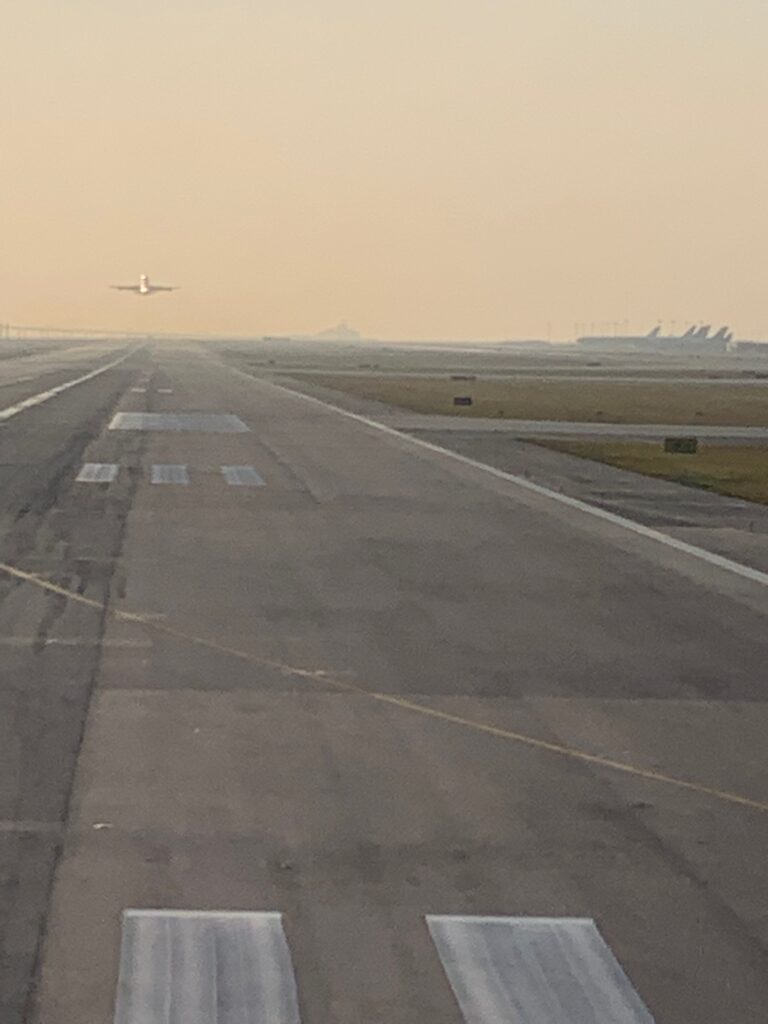
In the vast skies, recent events remind us that safety in the air goes beyond strapping into a seat. From paying attention during safety briefings to securing seatbelts, every action matters. It’s not just about individual safety but a collective responsibility as passengers. These emphasise the importance of discipline—listening to crew instructions, being mindful, and adhering to safety protocols. Each passenger’s cooperation contributes to overall flight safety.
Let’s be active participants in our safety and that of others. May every takeoff be smooth, and every landing gentle in 2024. Bon voyage!
NB This is an updated post from 2014!


Leave a Reply